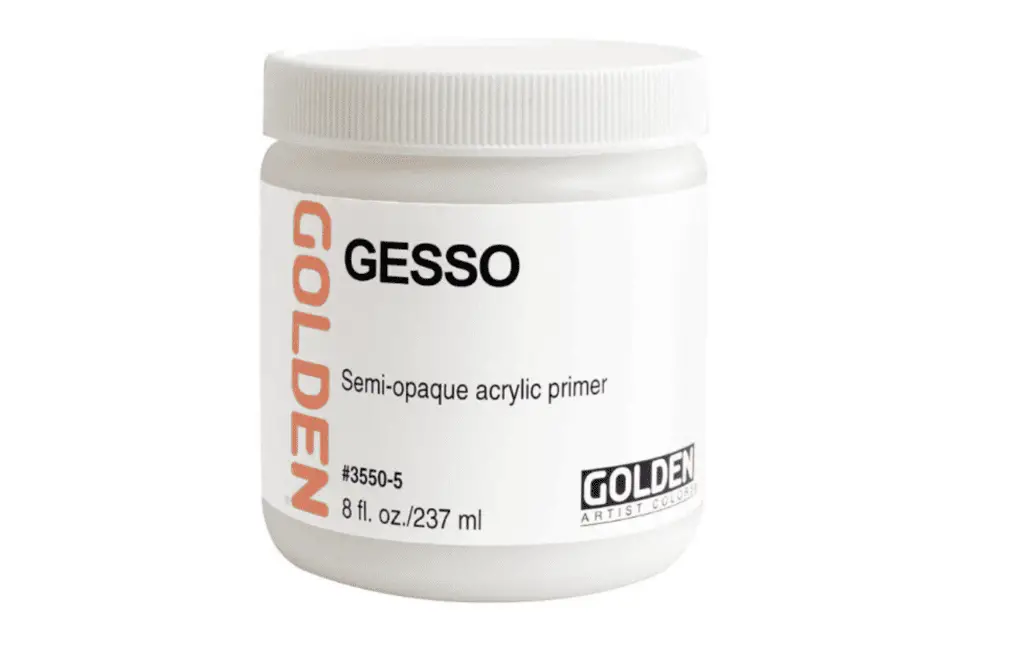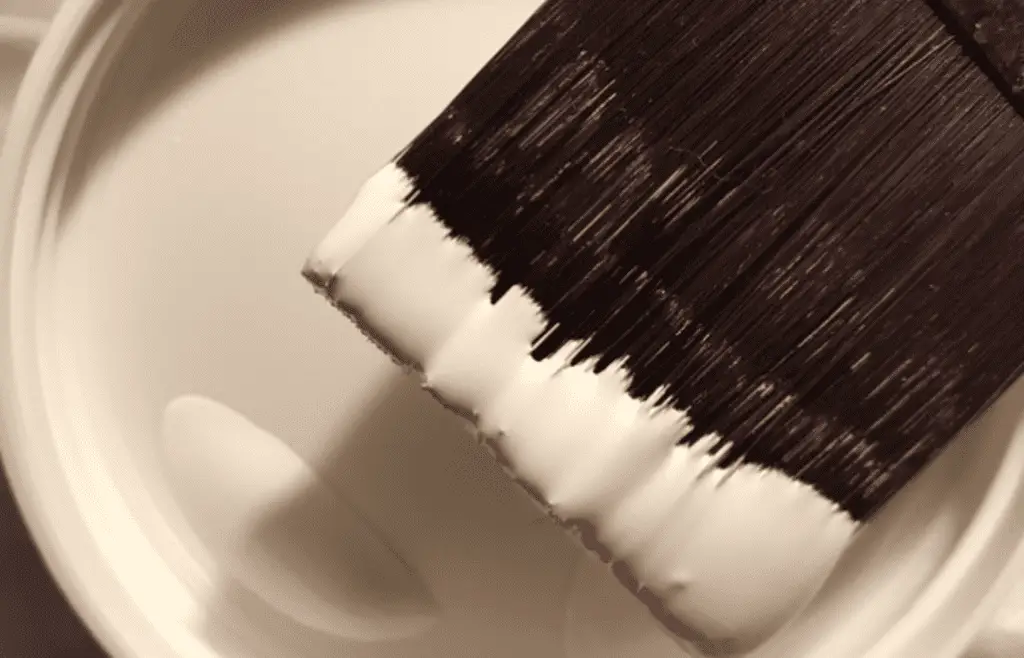Gesso requires a little bit of technique in order to make the most of this fantastic priming agent. Some painters use rollers or sponges for application, but brushes are the top choice for applying gesso. But does gesso ruin brushes?
Gesso can ruin brushes or cause them extensive damage over time. There are some brushes that are designed to withstand gesso and its strength. Furthermore, cleaning brushes well can help reduce potential damage.
When it comes to paint brushes, they require some maintenance to make sure they don’t get ruined. The same is true of your favorite gesso brushes so they don’t get ruined.
Understanding Gesso and its Properties

Gesso is usually made with either paint binder or an acrylic polymer and some calcium carbonate. Some gesso formulas also have water or glue. Gesso is used mainly as a primer since less formulas have glue than they once did, but it can also be used as a sealant. Most gesso is white, but it can also be found in translucent, black, or various colors.
Gesso is able to prime multiple surfaces very well, acting as a protective layer to prevent paint from soaking into the surface. Gesso has a solid grip and tooth that helps paint and other materials adhere to the gesso so the color remains intact for a long time. One or two layers of gesso is usually enough, but gesso can be layered more or less depending on your project.
Gesso, whether a thin or thick formula, tends to dry pretty quickly as soon as air hits it. Dipping a brush in water before dipping it in gesso can help buy you some time as you prime your surface of choice.
To check the current price and availability of Mont Marte Premium Gesso, click here to view the listing on Amazon.
Understanding Brushes

Paint brushes don’t just look different from each other; they are also only suited to certain types of paints. Bristles can be made from a variety of animal hairs or can be made with synthetic fibers. Typically, quality brushes are made with wood handles, but brushes may also be made with plastic, metal, or other sturdy materials.
Picking the right brush for your art is about finding the perfect balance between what you like using and what kind of paint you use. Brushes come in different widths and bristle length that can help offer different levels of control, coverage, and texture.
Brushes can last a long time when you take good care of them. They should be cleaned and bristles should be given time to air dry before they’re stored. Brushes that have long bristles benefit from having a comb run through them, especially if they’re made of real hair. Combing brushes can also help reduce shedding, which can ruin paintings.
To check the current price and availability of brushes for gesso, click here to view the listing on Amazon.
Can Gesso Ruin Brushes?
Gesso can ruin brushes a lot easier than basic paint, but that doesn’t mean all brushes will definitely get ruined by gesso. As to be expected, gesso brushes just need to be cleaned right after use rather than waiting until your project is done.
Gesso is thicker and heavier than paint, and dainty or loose bristles can shed. A brush used for gesso may end up feeling a little bit dry after use since gesso is hardier than most paints.
Advantages and Disadvantages of Using Brushes for Gesso Application
Brushes are the best way to apply gesso. You’ll be able to spread gesso much more evenly when using a wide, flat brush with sturdy bristles. You don’t need to purchase expensive brushes, either. A good gesso brush that’ll stand up to its strength can be found at numerous price points for any artist’s budget.
On the other hand, not all brushes can be used for gesso. Brushes that are too soft can shed when they go up against the rougher texture of gesso, causing bristles to get lost inside the primer. Thick gesso can end up degrading brushes over time, especially if they aren’t being cleaned regularly, which can be time consuming.
How to Use Brushes for Gesso Application

One of the best ways to prevent having gesso ruin your brushes is by using them the right way. Before getting your brush into some gesso, dipping it into some water is actually highly recommended. You just want a light coat of water on your brush; don’t oversaturate it, and make sure it’s not dripping wet when you go to dip it in gesso.
You want to lightly dip your brush into the gesso. It doesn’t need to be saturated or completely coated in gesso. In fact, if you coat a brush in gesso, cleaning it thoroughly is going to be extremely difficult. If you have a big job and will be using lots of gesso, consider dipping it in some water so the older gesso doesn’t dry in the bristles.
Proper Care and Maintenance of Brushes After Gesso Application
Brushes can still be maintained after using them for gesso application with the right care. The key is to control how much gesso you get on a brush and to make sure you’re cleaning your brush right after you’re finished it. When finished, let the brush soak in alcohol so the gesso can thoroughly dissolve.
Once you’ve washed brushes, try to rinse them as thoroughly as possible so the bristles don’t have remnants of alcohol. You can use a little bit of mild dish soap and water to get rid of the smell. Additionally, running a comb through the bristles helps to take off any small particles of gesso left over.
Final Thoughts
Gesso can ruin brushes if you’re too heavy handed in coating the brush or if you don’t clean your brush properly. Otherwise, your brushes shouldn’t be any worse off if they were being used with any other kind of paint or primer. Over time, all brushes start to wear down.
It may take cycling through a few brushes or other methods of application before you find the gesso brush that is right for you. You don’t have to spend a ton of money either, though you can find brushes that are a perfect match for the priming strength of a good quality gesso.


